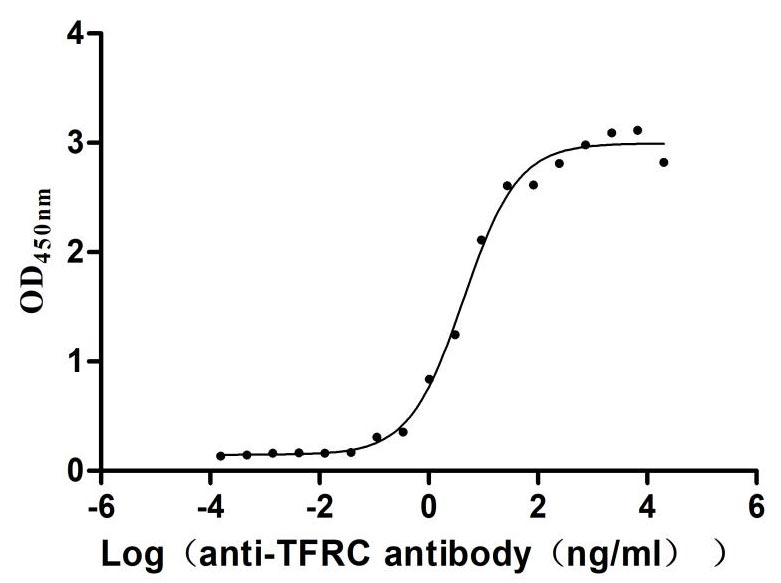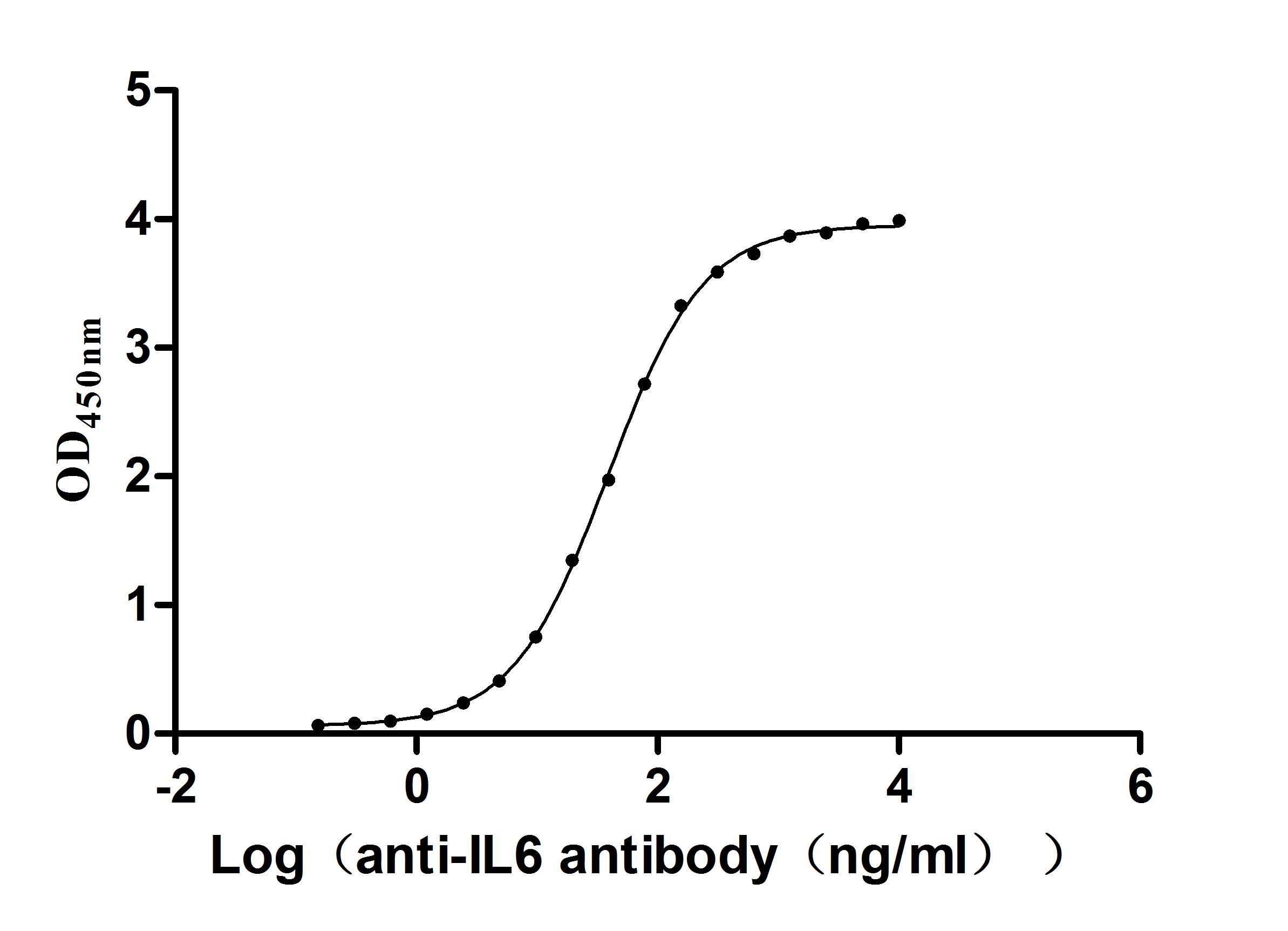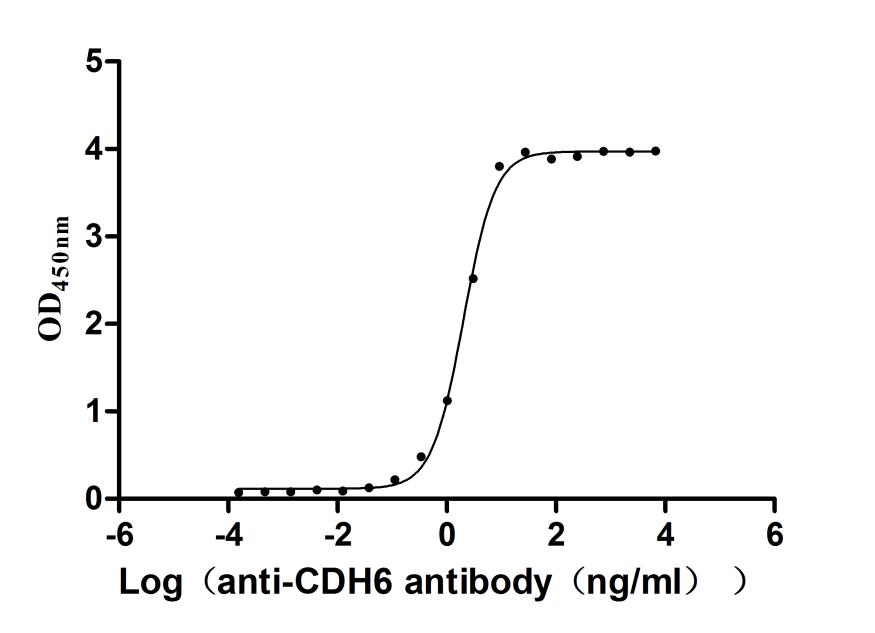Recombinant Human Sharpin (SHARPIN)
-
货号:CSB-YP867119HU
-
规格:
-
来源:Yeast
-
其他:
-
货号:CSB-EP867119HU-B
-
规格:
-
来源:E.coli
-
共轭:Avi-tag Biotinylated
E. coli biotin ligase (BirA) is highly specific in covalently attaching biotin to the 15 amino acid AviTag peptide. This recombinant protein was biotinylated in vivo by AviTag-BirA technology, which method is BriA catalyzes amide linkage between the biotin and the specific lysine of the AviTag.
-
其他:
-
货号:CSB-BP867119HU
-
规格:
-
来源:Baculovirus
-
其他:
-
货号:CSB-MP867119HU
-
规格:
-
来源:Mammalian cell
-
其他:
产品详情
-
纯度:>85% (SDS-PAGE)
-
基因名:
-
Uniprot No.:
-
别名:DKFZp434N1923; hSIPL1; Shank associated RH domain interacting protein; SHANK associated RH domain interactor; Shank interacting protein like 1; Shank-associated RH domain-interacting protein; Shank-interacting protein-like 1; Sharpin; SHRPN_HUMAN; SIPL1
-
种属:Homo sapiens (Human)
-
蛋白长度:full length protein
-
表达区域:1-387
-
氨基酸序列MAPPAGGAAA AASDLGSAAV LLAVHAAVRP LGAGPDAEAQ LRRLQLSADP ERPGRFRLEL LGAGPGAVNL EWPLESVSYT IRGPTQHELQ PPPGGPGTLS LHFLNPQEAQ RWAVLVRGAT VEGQNGSKSN SPPALGPEAC PVSLPSPPEA STLKGPPPEA DLPRSPGNLT EREELAGSLA RAIAGGDEKG AAQVAAVLAQ HRVALSVQLQ EACFPPGPIR LQVTLEDAAS AASAASSAHV ALQVHPHCTV AALQEQVFSE LGFPPAVQRW VIGRCLCVPE RSLASYGVRQ DGDPAFLYLL SAPREAPATG PSPQHPQKMD GELGRLFPPS LGLPPGPQPA ASSLPSPLQP SWSCPSCTFI NAPDRPGCEM CSTQRPCTWD PLAAAST
-
蛋白标签:Tag type will be determined during the manufacturing process.
The tag type will be determined during production process. If you have specified tag type, please tell us and we will develop the specified tag preferentially. -
产品提供形式:Lyophilized powder
Note: We will preferentially ship the format that we have in stock, however, if you have any special requirement for the format, please remark your requirement when placing the order, we will prepare according to your demand. -
复溶:We recommend that this vial be briefly centrifuged prior to opening to bring the contents to the bottom. Please reconstitute protein in deionized sterile water to a concentration of 0.1-1.0 mg/mL.We recommend to add 5-50% of glycerol (final concentration) and aliquot for long-term storage at -20℃/-80℃. Our default final concentration of glycerol is 50%. Customers could use it as reference.
-
储存条件:Store at -20°C/-80°C upon receipt, aliquoting is necessary for mutiple use. Avoid repeated freeze-thaw cycles.
-
保质期:The shelf life is related to many factors, storage state, buffer ingredients, storage temperature and the stability of the protein itself.
Generally, the shelf life of liquid form is 6 months at -20°C/-80°C. The shelf life of lyophilized form is 12 months at -20°C/-80°C. -
货期:Delivery time may differ from different purchasing way or location, please kindly consult your local distributors for specific delivery time.Note: All of our proteins are default shipped with normal blue ice packs, if you request to ship with dry ice, please communicate with us in advance and extra fees will be charged.
-
注意事项:Repeated freezing and thawing is not recommended. Store working aliquots at 4°C for up to one week.
-
Datasheet :Please contact us to get it.
相关产品
靶点详情
-
功能:Component of the LUBAC complex which conjugates linear polyubiquitin chains in a head-to-tail manner to substrates and plays a key role in NF-kappa-B activation and regulation of inflammation. LUBAC conjugates linear polyubiquitin to IKBKG and RIPK1 and is involved in activation of the canonical NF-kappa-B and the JNK signaling pathways. Linear ubiquitination mediated by the LUBAC complex interferes with TNF-induced cell death and thereby prevents inflammation. LUBAC is recruited to the TNF-R1 signaling complex (TNF-RSC) following polyubiquitination of TNF-RSC components by BIRC2 and/or BIRC3 and to conjugate linear polyubiquitin to IKBKG and possibly other components contributing to the stability of the complex. Together with OTULIN, the LUBAC complex regulates the canonical Wnt signaling during angiogenesis.
-
基因功能参考文献:
- Sharpin-Arp2/3 interaction promotes lamellipodium formation. PMID: 28775156
- SIPL1 contributes to promote resistance to tamoxifen in Breast cancer cells through both AKT and NF-kappaB actions. PMID: 29248549
- the present study found that loss of the NEMO-SHARPIN interaction impaired recruitment of truncated NEMO forms into punctuate structures that are transiently formed on cell stimulation and thus led to a defect in linear ubiquitination PMID: 28249776
- Overexpression of SHARPIN in Prostate cancer cells promoted cell growth and reduced apoptosis through NF-kB/ERK/Akt pathway and apoptosis-associated proteins. SHARPIN enhances the metastasis of prostate cancer and impair patient survivals. PMID: 28230260
- Our study firstly identifies the role of SHARPIN in promoting wild-type P53 degradation and correlates with poor prognosis in P53 wild-type breast cancer. PMID: 28063307
- Data show that SHANK-associated RH domain interacting protein (SHARPIN) gene expression in breast cancer patients predicts clinical outcomes. PMID: 26506596
- the roles of SHARPIN in inhibiting integrin activity and supporting linear ubiquitination are (molecularly) distinct. PMID: 26600301
- progesterone significantly reduced SIPL1 mRNA and protein expression in MCF7 cells. As progesterone enhances breast cancer tumorigenesis in context dependent manner, inhibition of SIPL1 expression may contribute to progesterone's non-tumorigenic function PMID: 25992689
- SIPL1 binds PTEN and enhances PTEN polyubiquitination. PMID: 25152374
- Sharpin deficiency sensitized primary murine keratinocytes, human keratinocytes, and mouse embryonic fibroblasts to TNF-induced apoptosis. PMID: 25443631
- SIPL1 promotes AKT activation by decreasing the amount of PTEN protein in CHO-K1 cells. PMID: 25018115
- SHARPIN controls lymphocyte migration by endogenously maintaining LFA-1 inactive to allow adjustable detachment of the uropods in polarized cells. PMID: 24210817
- crystals of SHARPIN belonged to the primitive tetragonal space group P4(3)2(1)2, with unit-cell parameters a = b = 61.55, c = 222.81 A PMID: 22750873
- the crystal structure of the N-terminal portion of SHARPIN, which adopts the highly conserved pleckstrin homology superfold that is often used as a scaffold to create protein interaction modules PMID: 22549881
- SHARPIN inhibits the critical switching of beta1-integrins from inactive to active conformations. PMID: 21947080
- SHARPIN is an additional component of LUBAC; SHARPIN-containing complexes can linearly ubiquitinate NEMO and activated NF-kappaB PMID: 21455180
- Data report the identification of the related proteins Sipl1 (Shank-interacting protein-like 1) and Rbck1 (RBCC protein interacting with PKC1) as novel interaction partners of Eya1. PMID: 20956555
- Suggest that Sharpin is not an inert scaffold protein, but may play tumor-associated roles during cancer biogenesis. PMID: 20179993
显示更多
收起更多
-
亚细胞定位:Cytoplasm, cytosol. Cell junction, synapse.
-
组织特异性:Highly expressed in skeletal muscle and placenta and at lower levels in brain, heart, colon without mucosa, thymus, spleen, kidney, liver, small intestine, lung and peripheral blood leukocytes. Up-regulated in various tumor tissues such as kidney, liver,
-
数据库链接:
HGNC: 25321
OMIM: 611885
KEGG: hsa:81858
STRING: 9606.ENSP00000381698
UniGene: Hs.529755
Most popular with customers
-
Recombinant Human IGF-like family receptor 1 (IGFLR1), partial (Active)
Express system: Mammalian cell
Species: Homo sapiens (Human)
-
Recombinant Human Transferrin receptor protein 1 (TFRC), partial (Active)
Express system: Mammalian cell
Species: Homo sapiens (Human)
-
Recombinant Human Serotransferrin(TF) (Active)
Express system: Mammalian cell
Species: Homo sapiens (Human)
-
-
Recombinant Human Interleukin-12 receptor subunit beta-1(IL12RB1),partial (Active)
Express system: Mammalian cell
Species: Homo sapiens (Human)
-
Recombinant Mouse Cadherin-6(Cdh6),partial (Active)
Express system: Mammalian cell
Species: Mus musculus (Mouse)


















